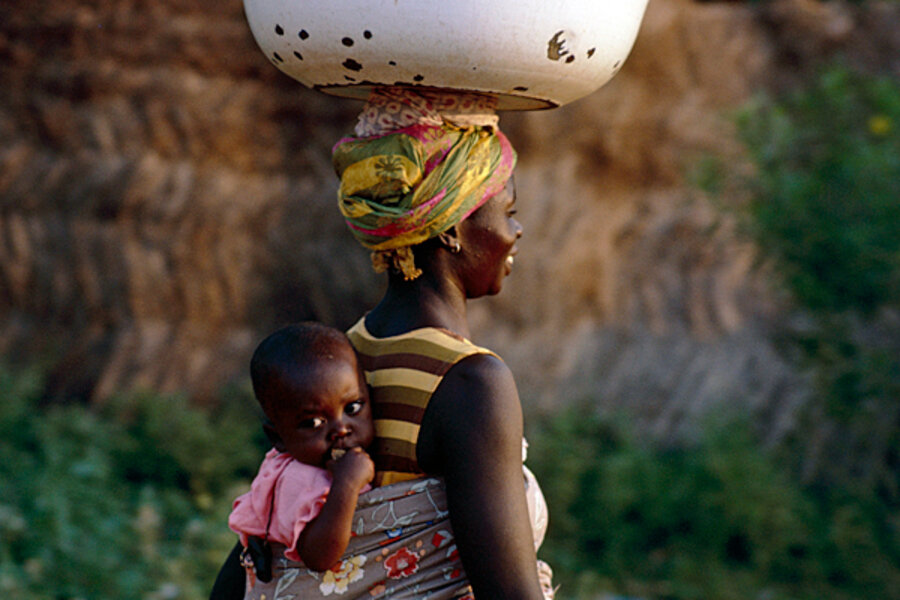Life's better for West Africa's mothers these days, but conditions still dire: report
Loading...
| Freetown, Sierra Leone
Still looking for a little something to give Mom this Sunday? How about some clean water, a few years of education, or maybe even a trained health worker to assist her the next time she goes into labor?
Oh wait; she probably already has those things, assuming she lives in the developed world. Here in West Africa, it’s a very different story.
Just in time for Mother’s Day, the nongovernmental organization Save the Children has released its annual State of the World's Mothers Report that ranks conditions for mothers across the globe. (Norway is first, Afghanistan is last, and the United States is 31st, in case you were wondering.)
On the surface, the motherhood picture looks pretty bleak for West African countries, many of which still hover near the bottom of the rankings for things like child mortality, pregnancy-related deaths, and access to clean drinking water. But keep digging through the report and you’ll come across nuggets of hope.
In Nigeria, for instance, the number of children who died under the age of five dropped by more than a third between 1990 and 2009. The same figure fell by 43 percent in Ghana over the same period, while the number of Ghanaians who are undernourished was cut in half. In Mali, a woman’s lifetime risk of death from childbirth was one in 22 in 2009. That’s hardly a happy figure, but 10 years earlier, the rate was twice as high.
Many of these gains have been achieved thanks to significant foreign assistance – from Western governments, the World Bank, and international NGOs (Save the Children among them). Last year, with the support of the British government, Sierra Leone began offering free healthcare for all pregnant women and children under 5. Implementation hasn’t been perfect, of course, but it’s a step in the right direction.
And there’s still a very long way to go. In this year’s Mother’s Index – a ranking that combines measures of both women’s and children’s well-being – West Africa accounts for 10 of the 20 lowest-ranked countries.
So what’s keeping the region down?
Malaria contributes to the deaths of young children here, as does pneumonia, diarrhea, and malnutrition, doctors say. Many women die of post-partum hemorrhaging, a fairly common condition that can be easily treated by a trained health worker. But in too many places in West Africa, there simply are no doctors or nurses – or there are no medicines to administer.
For inspiration, perhaps West African leaders should look farther south, where the poor but growing nation of Malawi has managed to cut in half its death rate for children under 5 since 1990. The country did it by training community health workers in rural areas and sponsoring “child health days” to raise public awareness, among other things.
“Any country can learn from our experience,” Malawi’s president, Bingu wa Mutharika, wrote in an essay that was released in conjunction with the report. “But much work remains before we will be satisfied.”






